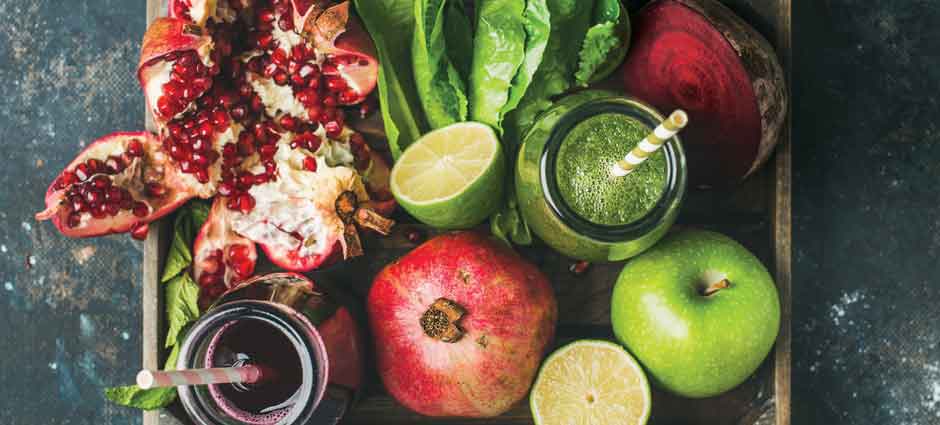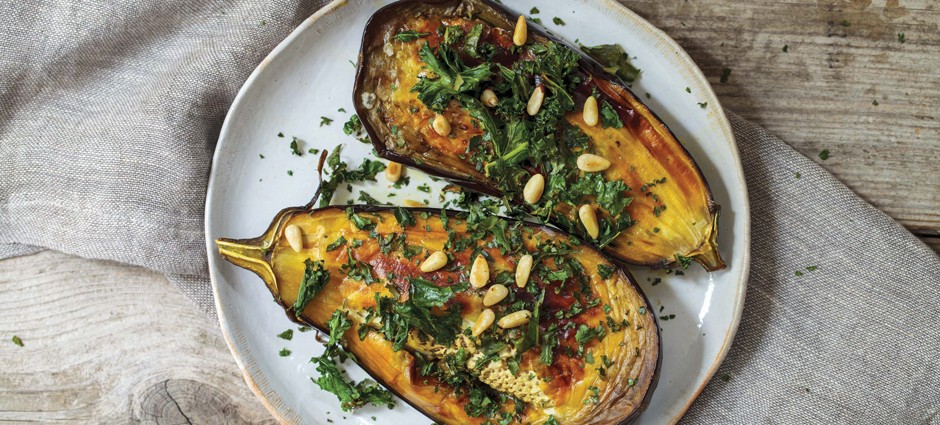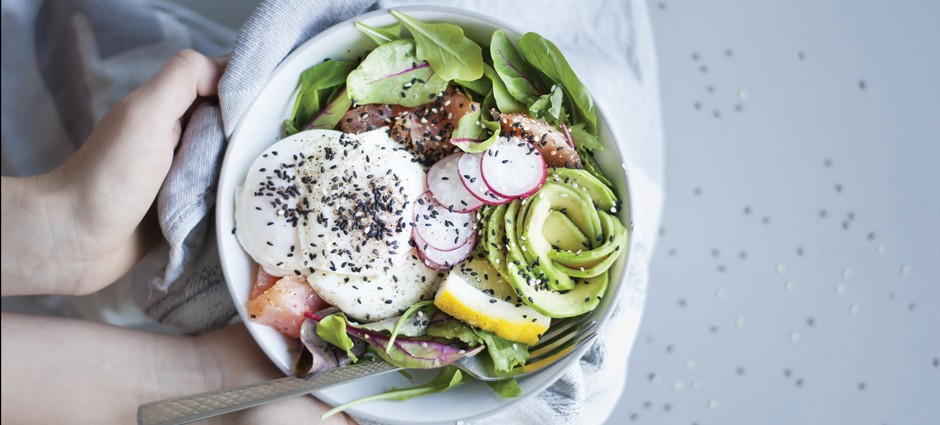Gone are the days when a diet was a temporary and much-dreaded way of eating to lose weight. In many circumstances, the word has been recast as a permanent way of eating (with some cheating allowed and expected) that can meet multiple goals, including losing and controlling weight, managing chronic health conditions and having more energy. Although this new mindset takes a more serious commitment, it often leads to much more satisfying long-term outcomes.
If you’re thinking about adjusting your eating habits, how do you choose from among the dozens of diet plans out there to find the one that’s right for you? We looked into six popular diets to better understand what they entail and how to stick with them. Keep in mind that it’s always a good idea to consult your doctor before changing your eating habits, especially if you have a medical condition.
DASH Diet
DASH stands for “Dietary Approaches to Stop Hypertension.” It was developed to help people with hypertension lower their blood pressure, but it’s also been shown to decrease the risk of strokes, cancer and other health problems.
The DASH diet advises people to eat mostly fruits and vegetables, lean meats, whole grains, low-fat dairy, nuts, seeds and legumes. It’s very similar to the “MyPlate” model that recently replaced the USDA’s food pyramid. When you serve yourself, fill half of your plate with vegetables. Lean protein should cover a quarter of your plate, with the remainder left for whole grains. Add some low-fat dairy, and you’re set.
This common-sense approach to eating is one of the things that make it popular and easy to stick to. “It doesn’t have any crazy rules,” says Jennifer Koslo, Ph.D., R.D.N. and author of The Complete DASH Diet for Beginners (Rockridge, 2017). “There’s no elimination of food groups. All of them can fit, although some are better than others.”
One misconception about the diet is that you need to remove all sodium. Although eating a lot of salty food is never a good idea, “you don’t have to eliminate salt from your diet,” Koslo says. “The first DASH trial didn’t restrict sodium, and the second one did. With and without the sodium restriction, people still saw beneficial results in lowering their blood pressure.”
Koslo’s number one tip for succeeding at the DASH diet is to cook from scratch as much as possible. “It’s important to eat fresh, wholesome foods on this diet,” she says. “It does take some planning and preparation, but it doesn’t have to be overwhelming. It’s just a matter of time management. Take it one meal at a time; use that basic meal-planning principle, and you’ll be fine.”
TRY: Carrot Cake Overnight Oats
Plant-Based Diet
The term “plant-based diet” means different things to different people. A pescatarian meal plan includes fish and seafood, but no other meat. A vegetarian consumes no meat, while vegans refuse all animal products. A whole-food plant diet further cuts out all refined products, including many oils and sugars.
Whatever path you choose to follow, there’s evidence that a plant-based diet is a good choice. “By and large, it gives people a lot of energy,” says Matt Frazier, coauthor of The No Meat Athlete Cookbook (The Experiment, 2017). “It helps them feel really good as long as they do it correctly—meaning enough food and whole foods, not vegan junk foods. Although plant-based foods are nutrient dense, they’re not very calorie dense, so it’s hard not to lose weight if it’s done correctly.”
The key to success with this diet, according to Frazier, is to make sure you get enough calories from whole foods. Beans, lentils, nuts and seeds are great protein sources. Calories can also come from all types of vegetables, fruits, grains, and eggs and dairy (unless you decide to go vegan).
“If you’re just starting out, the choice doesn’t need to be, ‘Do I want to try this vegan diet and never eat a cheeseburger again the rest of my life?’” Frazier says. “If people have that idea in their head, it’s really hard to make it last. Start slowly. It was a five-year process for me to get from where I was to being plant-based.”
When that cheeseburger craving strikes, Frazier gives you permission to give in. “It’s not a bad idea to make little compromises,” he notes. “People tend to want to do something all the way, and if they mess up they feel like they’ve failed and have to give up and start something new.” He adds that even going mostly plant-based can make a difference in how you feel.
Ketogenic Diet
Most of the time our bodies draw energy from glucose because it’s easier to process. However, during times of starvation or very low carbohydrate intake, we can get energy from fat particles called ketones. Getting your body to do this all the time (a state known as “nutritional ketosis”) is the goal of the ketogenic diet. Not only can it help you lose weight, research has shown it can also be better for your brain and body.
To achieve ketosis, it’s important to stick to a regimented ratio of foods. Your diet should consist of 60 to 85 percent fat, 15 to 30 percent protein, and 5 to 20 percent carbohydrates. Because that’s such a big range, experts sometimes recommend blood or urine tests to measure the presence of ketones and perfect your ratio. But according to certified nutrition specialist Amy Berger, who blogs at tuitnutrition.com, it doesn’t have to be that complicated.
“The most important thing is keeping your carb intake very low,” she says. “The fat and protein intake are very individualized, depending on what you’re hoping to do with this diet.” Over time you can develop the ratio you need for weight loss or health maintenance.
On the ketogenic diet, expect to eat plenty of non-lean meats, oily fish, cheese and yogurt, and eggs. To get enough fat, participants sometimes pour coconut milk into their coffee or snack on pork rinds. Low-carb vegetables such as leafy greens and celery are encouraged. Grains, processed foods and most types of fruit are off-limits.
Sticking with such a regimented diet is hard, especially if you’re the only one in your household doing it. “If you can find a diet buddy, that makes it easier,” Berger says. Look for someone online or through a support group in your community.
TRY: Dark Chocolate Avocado Mousse
Paleo Diet
“The stereotype of the paleo diet is that it’s the ‘caveman diet,’” says Berger. “People think it’s nothing but red meat and animal fat. That’s not true. You can eat that way if you choose to, but the paleo diet is really defined by whole foods. There are fewer limitations, and it’s very customizable.”
Adopting the paleo diet will mean cutting out some foods. Most plans call for no dairy, grains, legumes or beans, all of which are considered too processed and industrialized (some plans allow you to add in things such as raw milk, wild rice and green beans). All kinds of meat, seafood, fruits and vegetables, nuts, seeds, and seasonings remain on the menu.
“The big focus is on food quality,” advises Berger. For that reason, proponents recommend purchasing grass-fed beef, naturally-raised pork and chicken, and organic fruits and vegetables whenever possible.
However, “if all a person can afford is regular meat and regular veggies in the grocery store, that’s fine,” says Berger. “People shouldn’t feel like they can’t do paleo because they don’t make enough money. If you had a choice between conventional beef and produce or Lucky Charms and Pop-Tarts, by all means, eat the meat.”
A strict adherence to the paleo diet can make social situations tricky, Berger notes, and it requires cooking most of your own food. But its relative flexibility can make it a good place to start for people hoping to eventually follow a stricter eating plan, such as the ketogenic diet. Although the Paleo diet hasn’t been studied extensively, there is some evidence than it can help lower cholesterol levels and inflammation, manage diabetes and contribute to weight loss.
Whole30 Diet
This is the only diet on this list that starts with a temporary way of eating. For 30 days, people who participate in a Whole30 challenge follow a diet similar to paleo by eliminating processed foods, dairy, grains, legumes, sugar and alcohol. Once you’ve completed the challenge, slowly reintroduce other types of food one at a time. This will allow you to see what foods are causing indigestion, chronic pain or other problems. From there, you can customize a way of eating that works for your body.
Melissa Hartwig, certified sports nutritionist and co-developer of the Whole30 diet, says there are advantages to the plan that go far beyond improved health, better sleep and more energy. “I pulled out all the foods that I used to use as a reward or punishment, which created this incredibly transformed relationship with food,” she says. “Over those 30 days I felt like I had the healthiest relationship with food I’d had in my whole life.”
Whole30 isn’t considered a weight-loss plan. “We don’t ask people to count or restrict calories,” Hartwig says. “But 96 percent of people who participate in a Whole30 lose between 5 and 11 pounds in 30 days or improve their body composition.” They also report fewer cravings, and improvements in everything from asthma to diabetes.
“The worst thing that’s going to happen on your Whole30 is you’re going to eat really healthy food for 30 days,” said Hartwig. That sounds like a side effect worth taking a chance on.
TRY: Shrimp Stir-Fry over Cauliflower Grits
Mediterranean Diet
If the idea of a low- or no-carb diet has got you down, the Mediterranean diet may be a good alternative. It’s based on eating foods commonly consumed in the Mediterranean region. Locals who stick to the region’s traditional diet have some of the longest average life-expectancy rates on the planet, which is how this diet gained its popularity.
The Mediterranean diet encourages consumption of fruits, vegetables, legumes, nuts, unrefined grains and olive oil. Seafood, lean meats, and cheese and yogurt should make regular appearances on the menu. Enjoy one glass of red wine with dinner regularly.
“When you mention ‘diet,’ most people think you’re going to get involved in some complicated regimen with things you can and can’t eat,” says Nancy Harmon Jenkins, author of several books, including The New Mediterranean Diet Cookbook (Bantam, 2008). “The most important thing about the Mediterranean diet—apart from that it’s been shown to be a healthy way of eating—is that it’s so easy for Americans to follow. Almost anyone who can cook can prepare something that comes out of the Mediterranean.”
Jenkins encourages people to shop for local, seasonal vegetables whenever possible to get the maximum nutrition and flavor from them. Also, make sure the grains you buy are truly whole grains. “I don’t mean whole-wheat flour,” she says. “I mean stone-ground flour, which has the whole-wheat germ in it.” If you can’t find it in stores, see if you can order it online.
One downside to the diet is that it lacks a significant source of calcium. “There’s no milk in the diet other than a splash of milk in your morning coffee,” Jenkins points out. “But osteoporosis is not an issue in the Mediterranean. Osteoporosis is a problem in milk-drinking cultures, [which scientists surmise is because of high protein consumption in these cultures].”
TRY: Mediterranean Bean Soup with Spicy Greens



